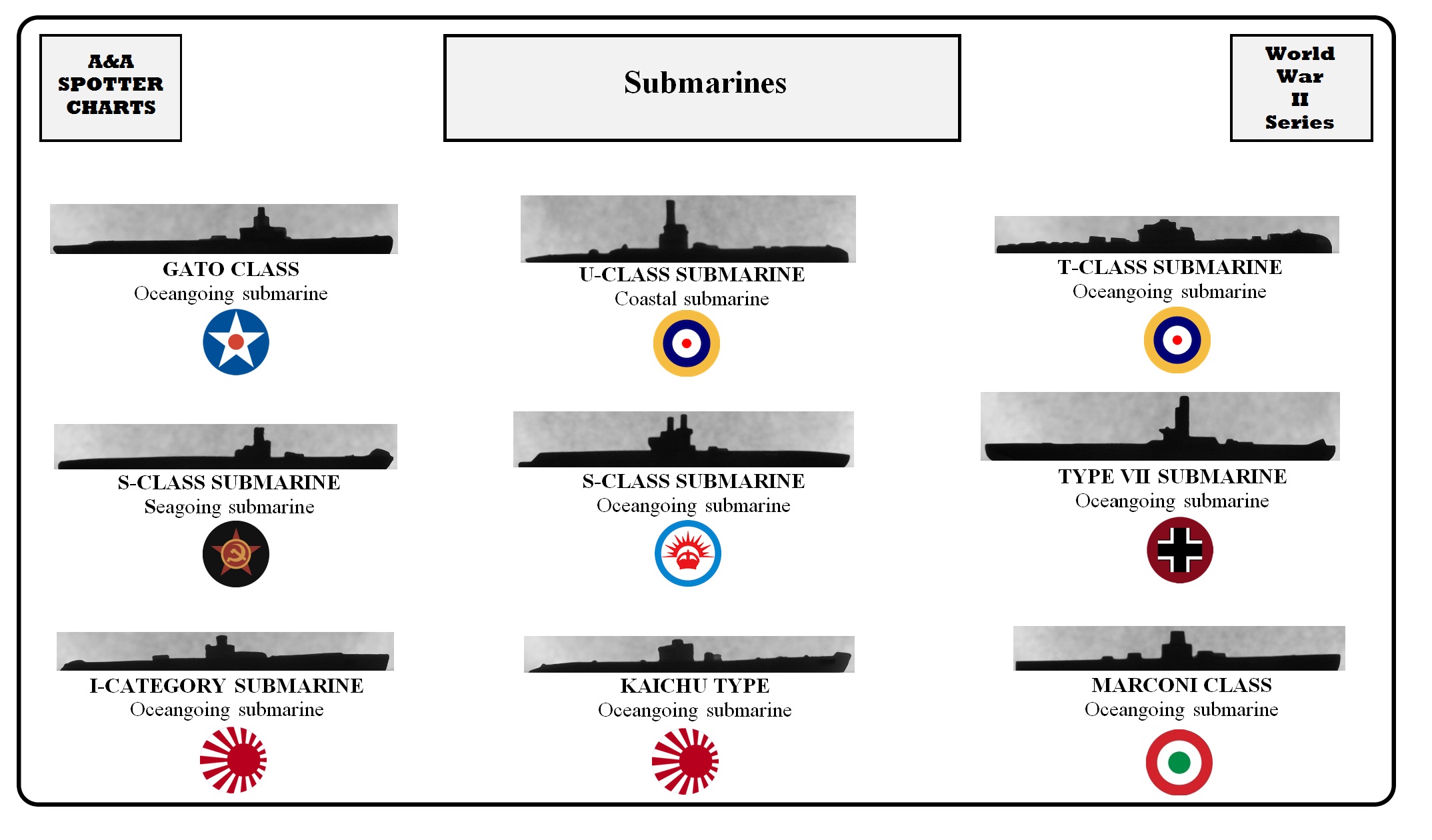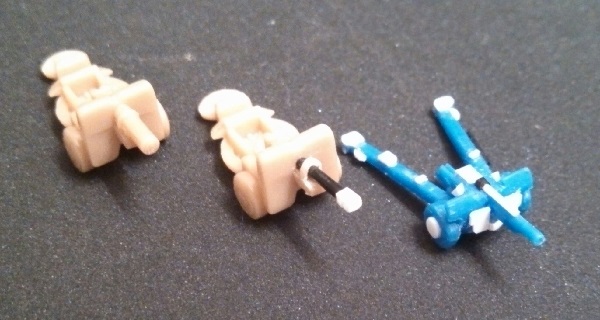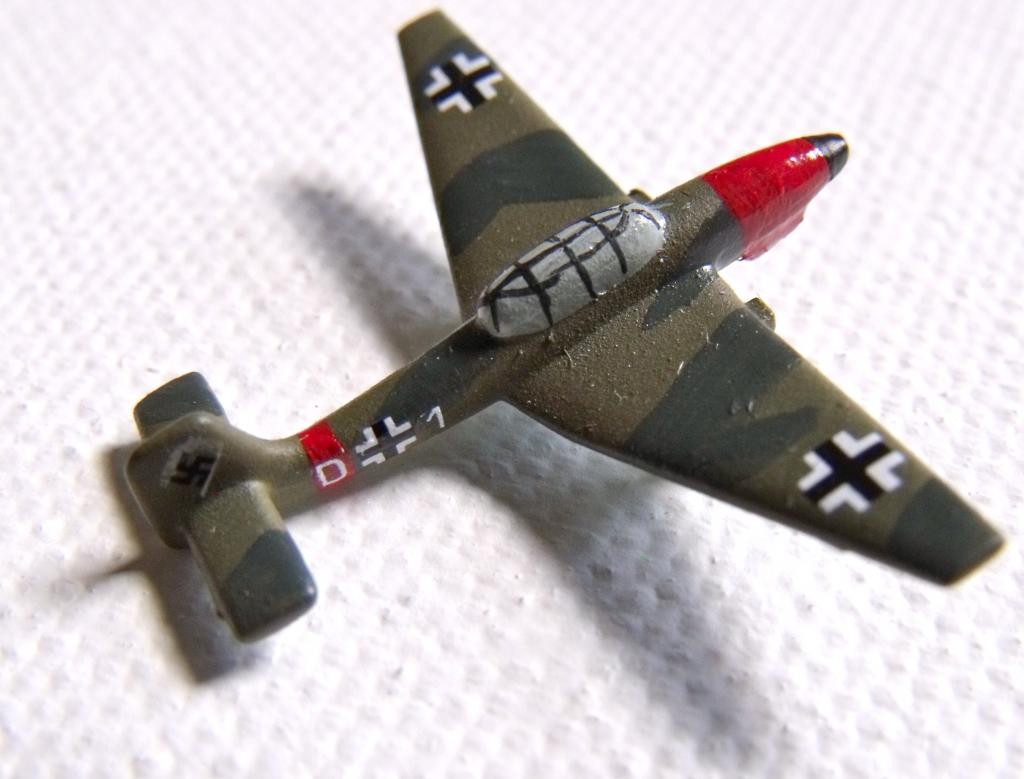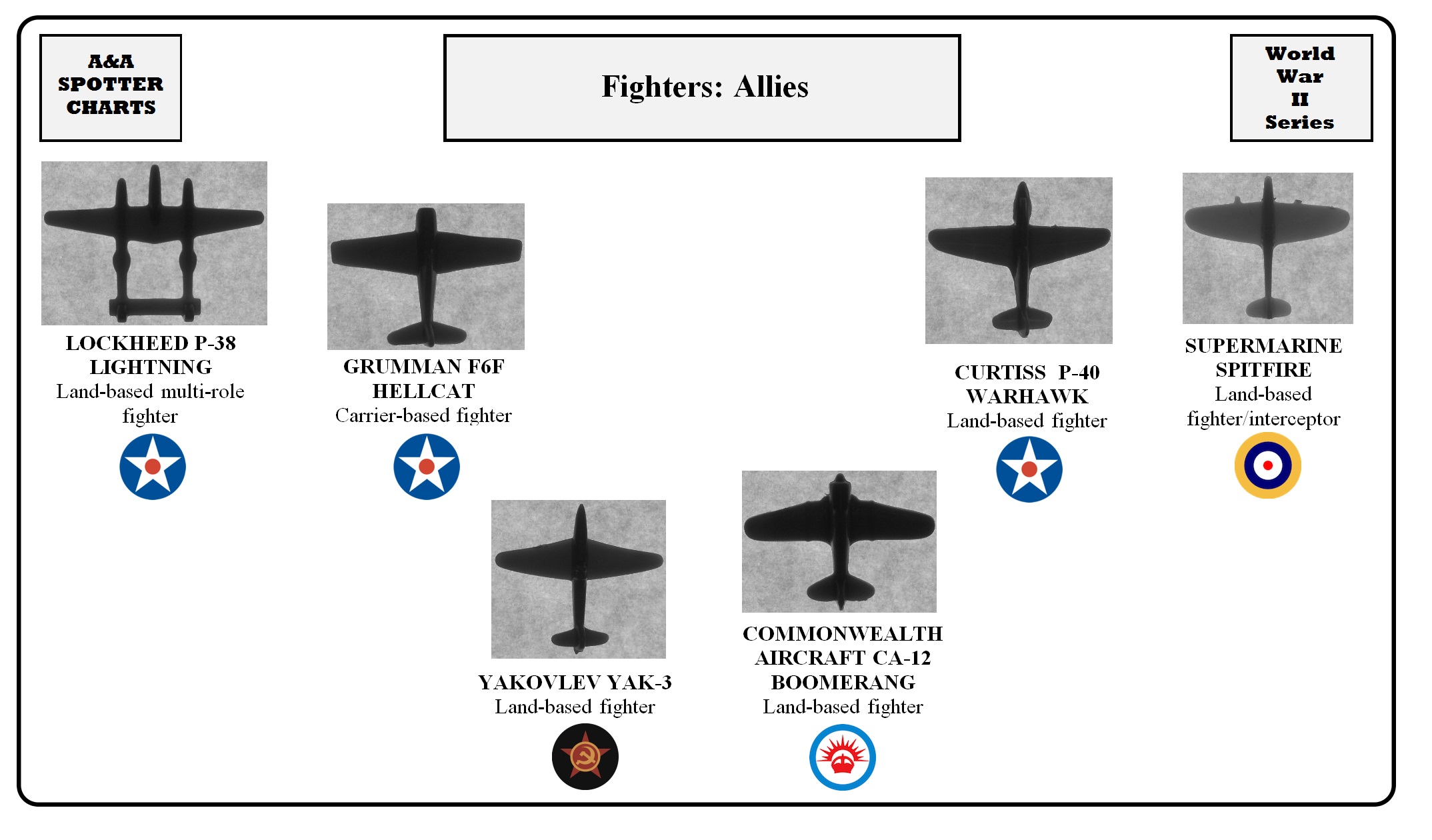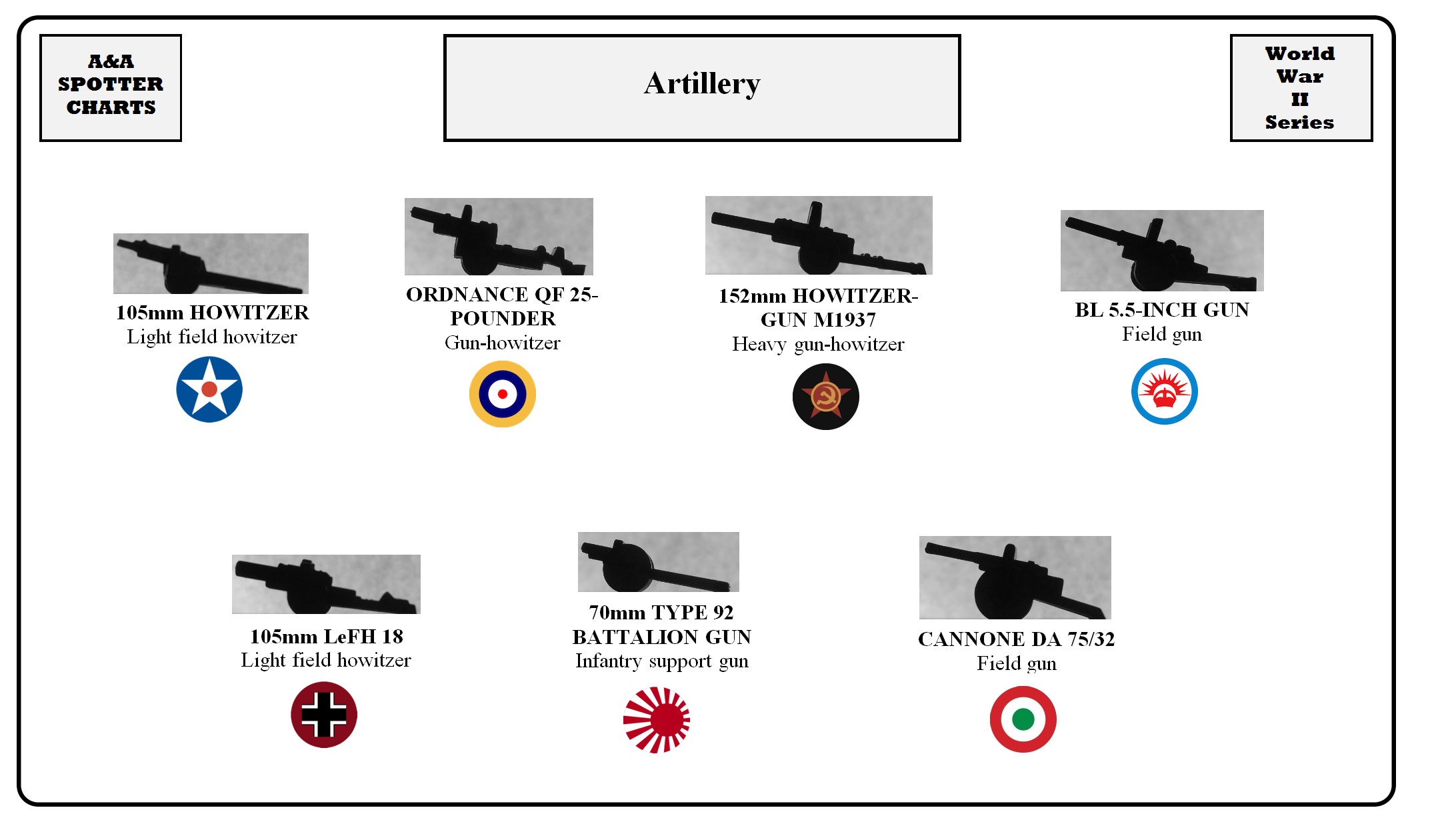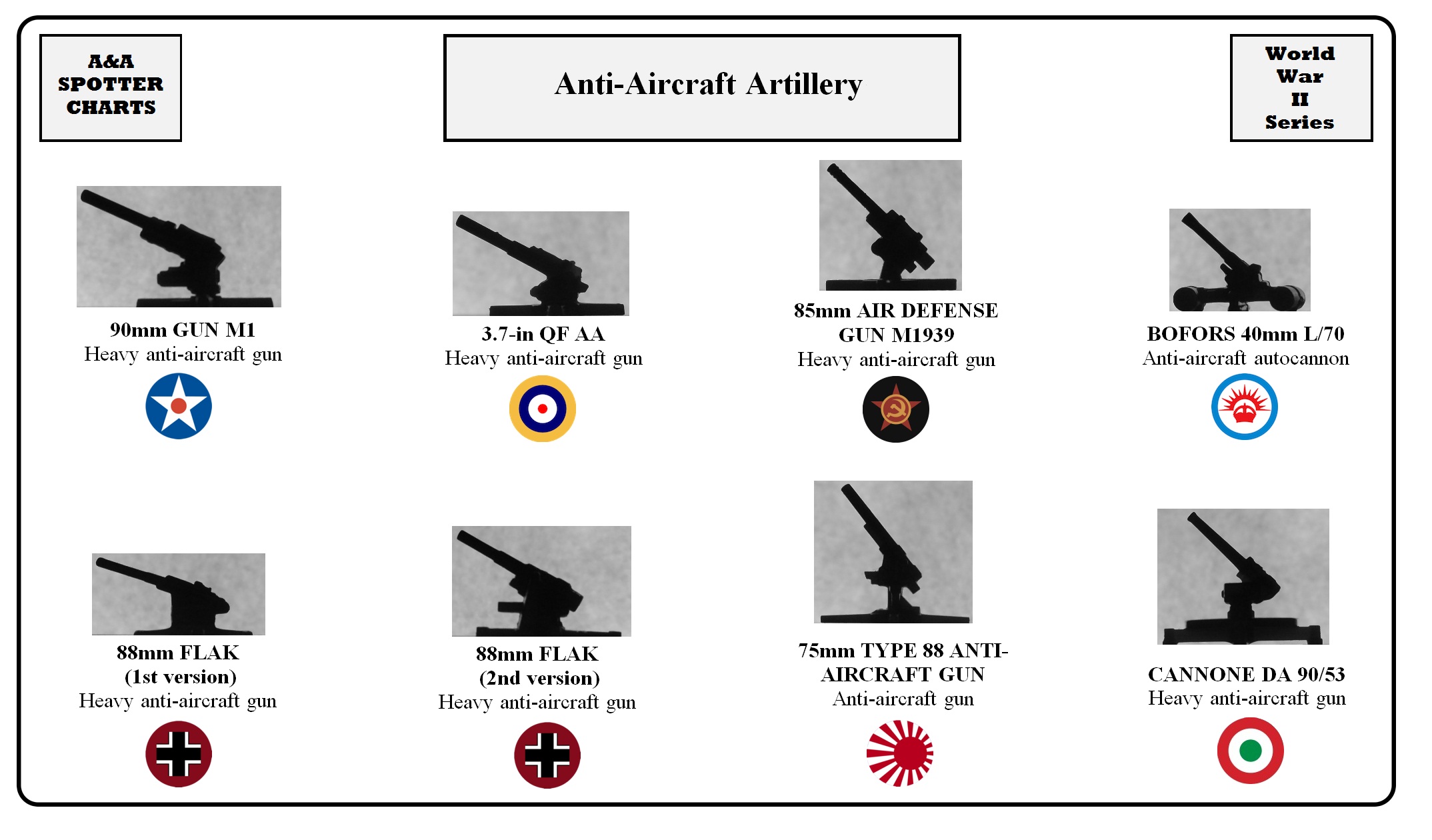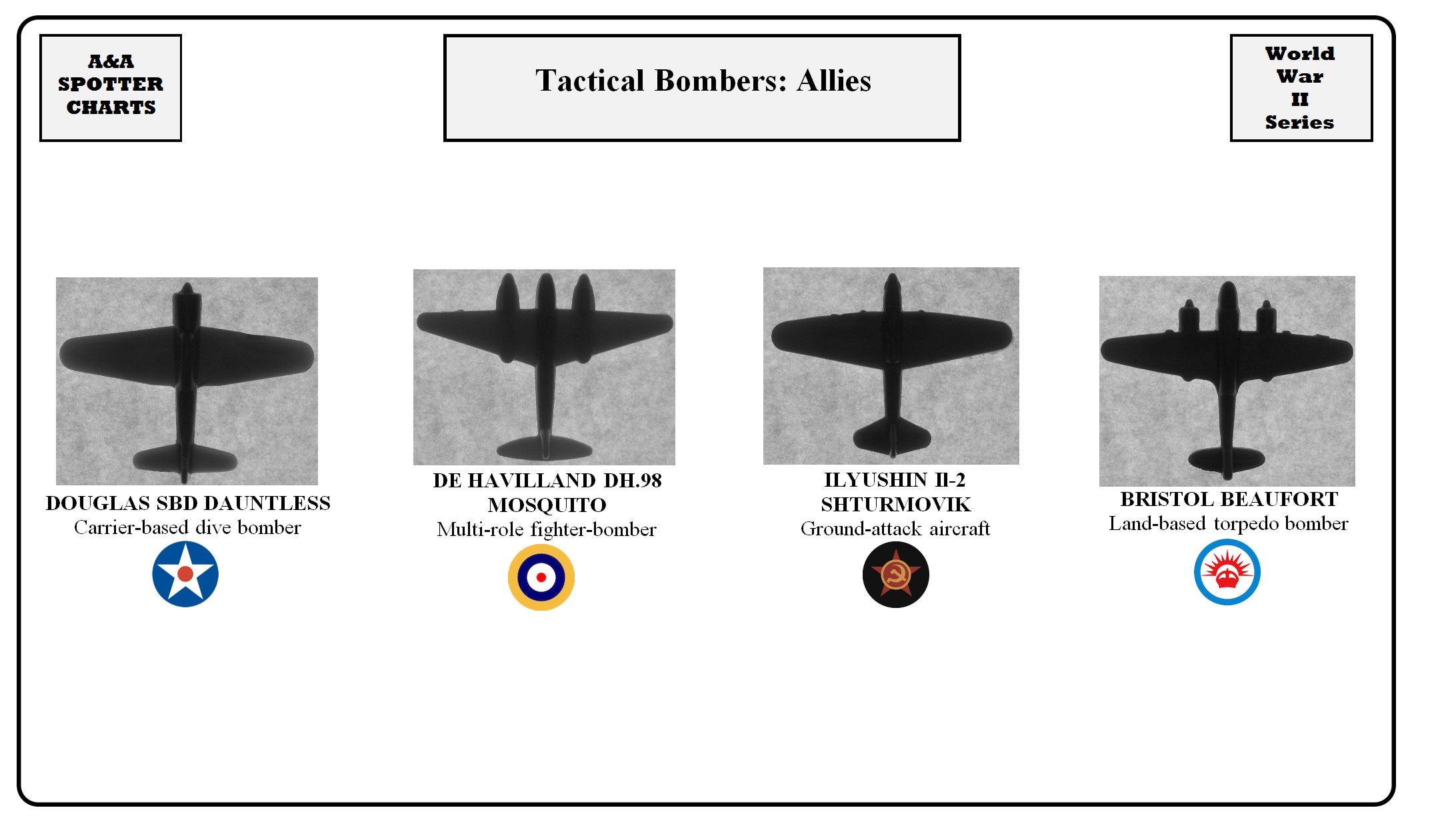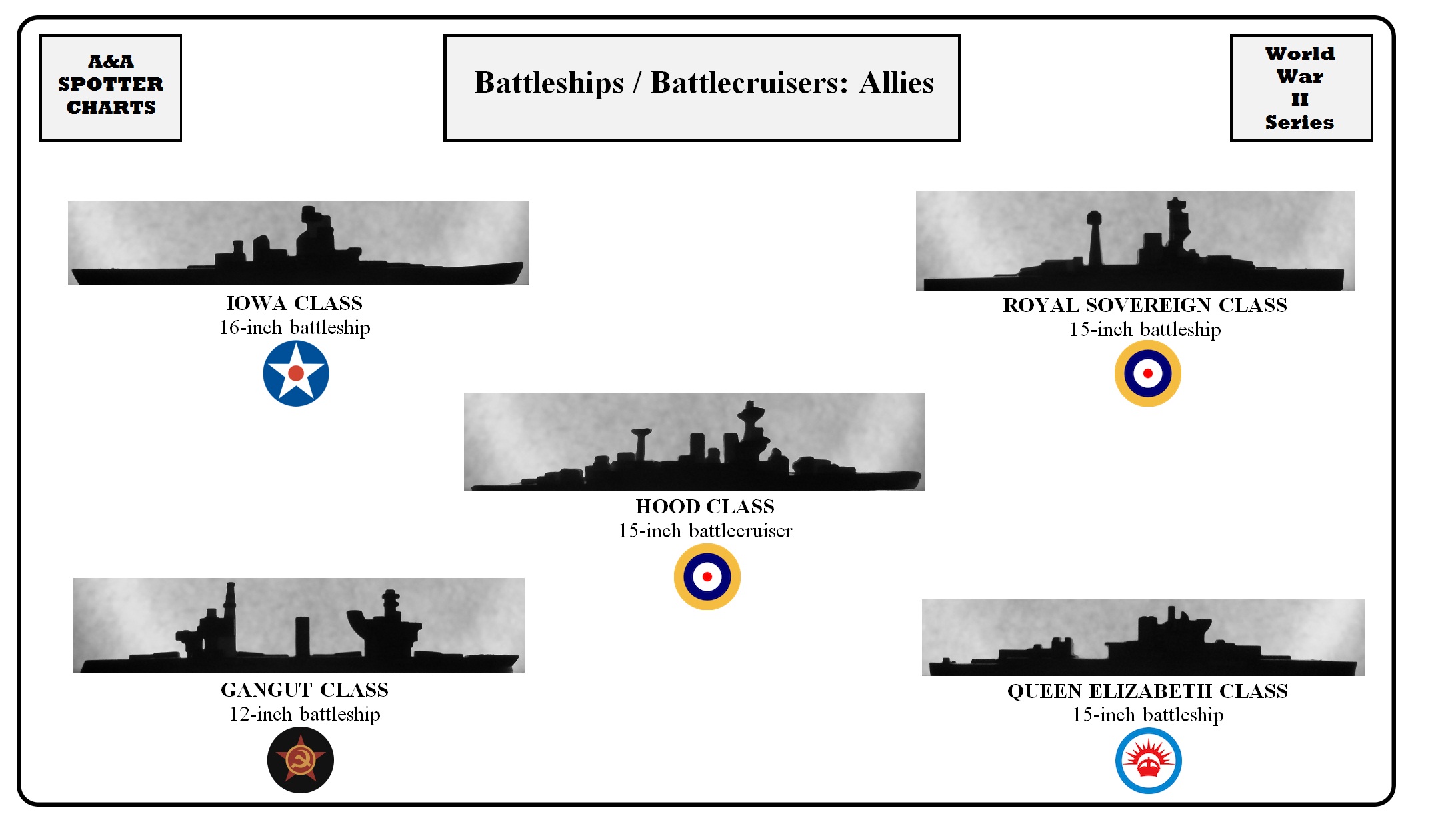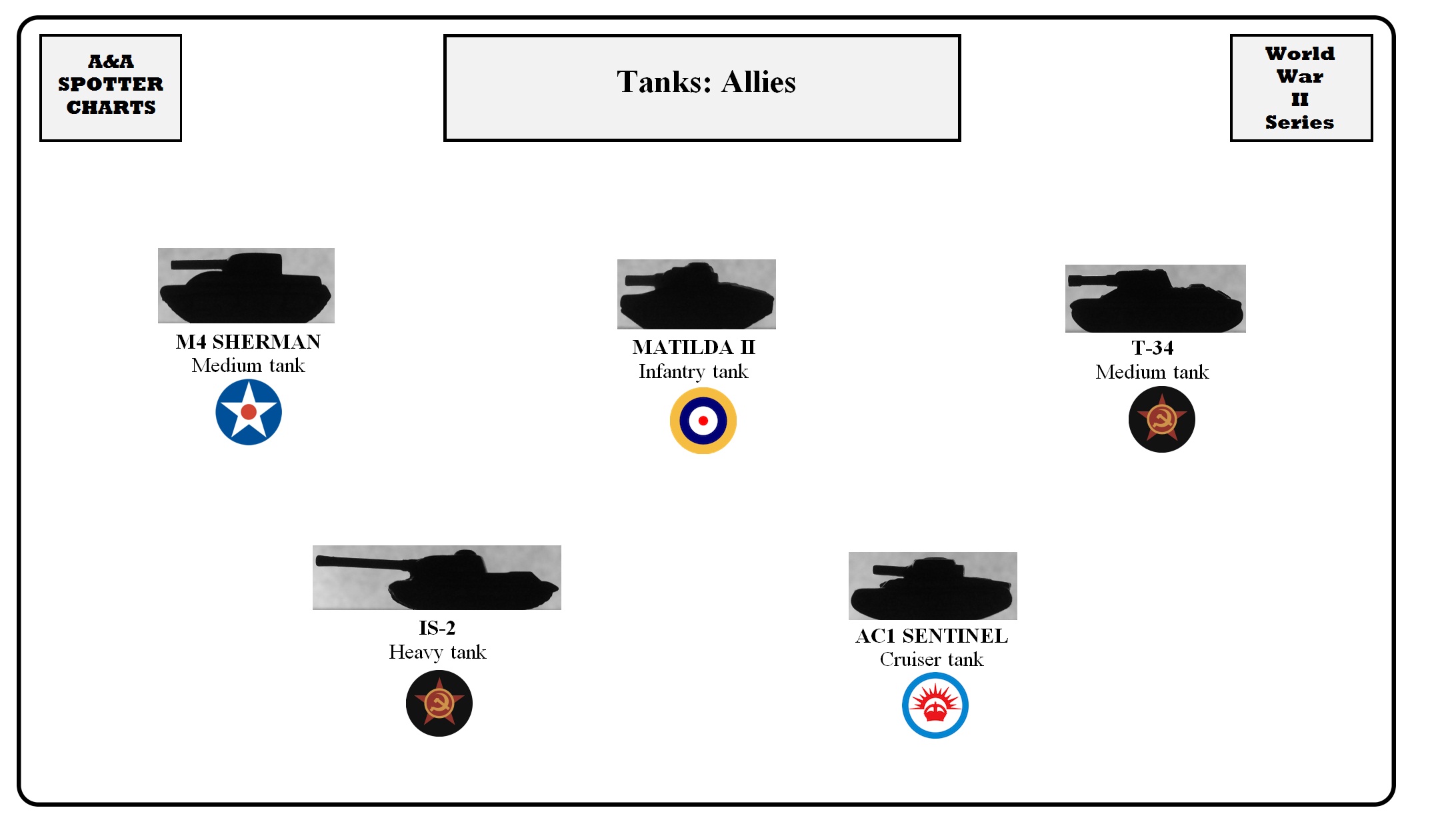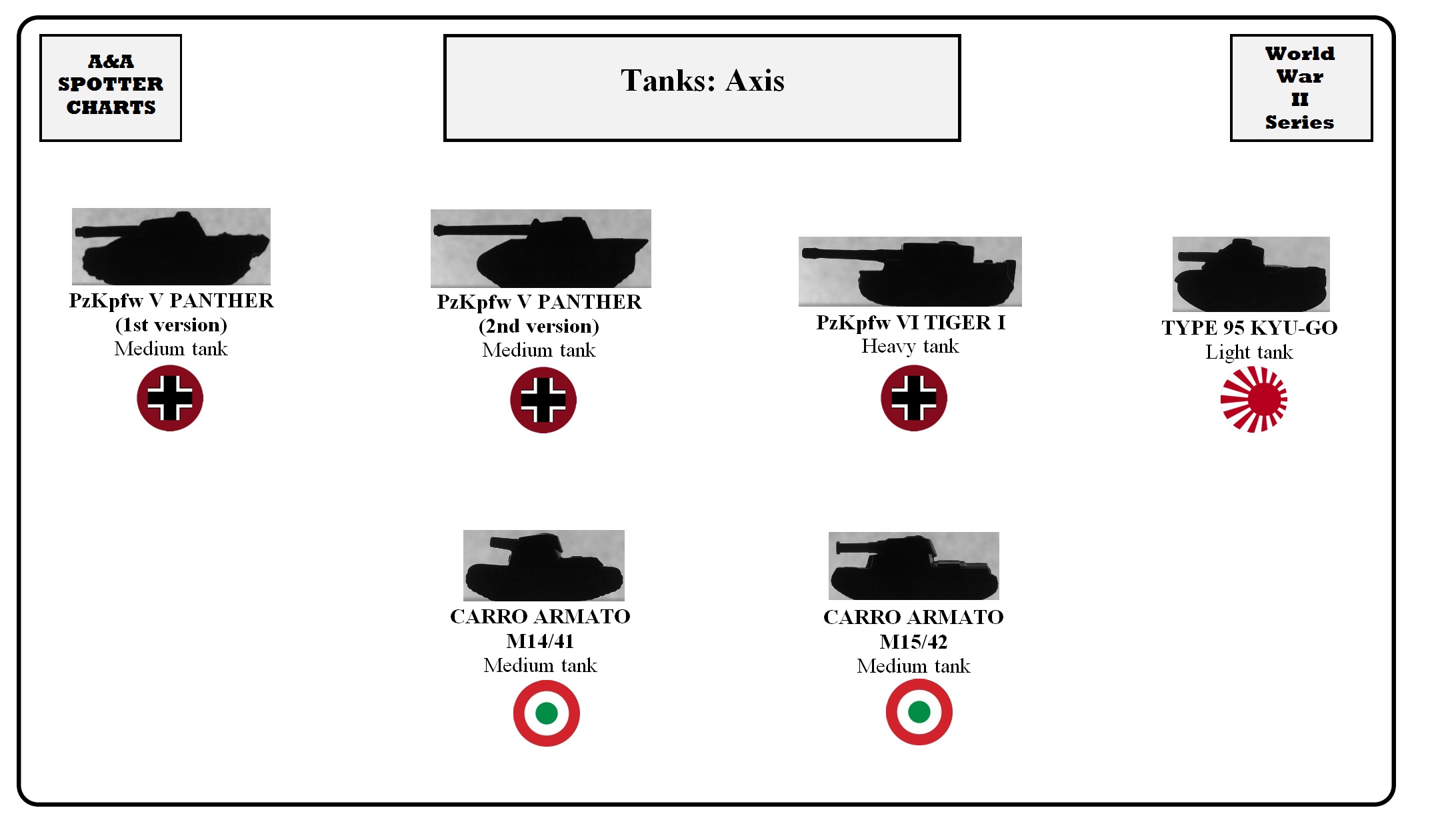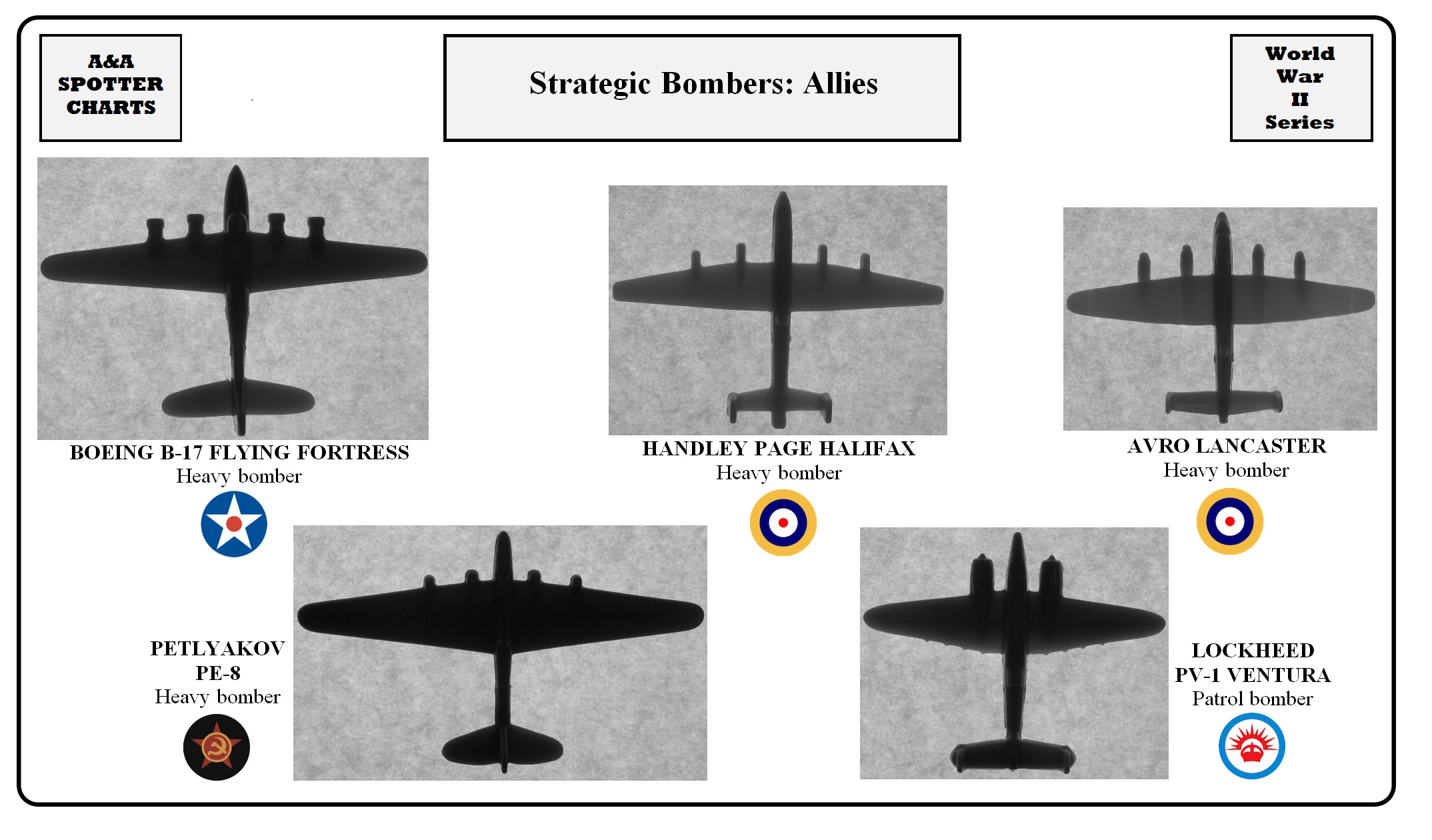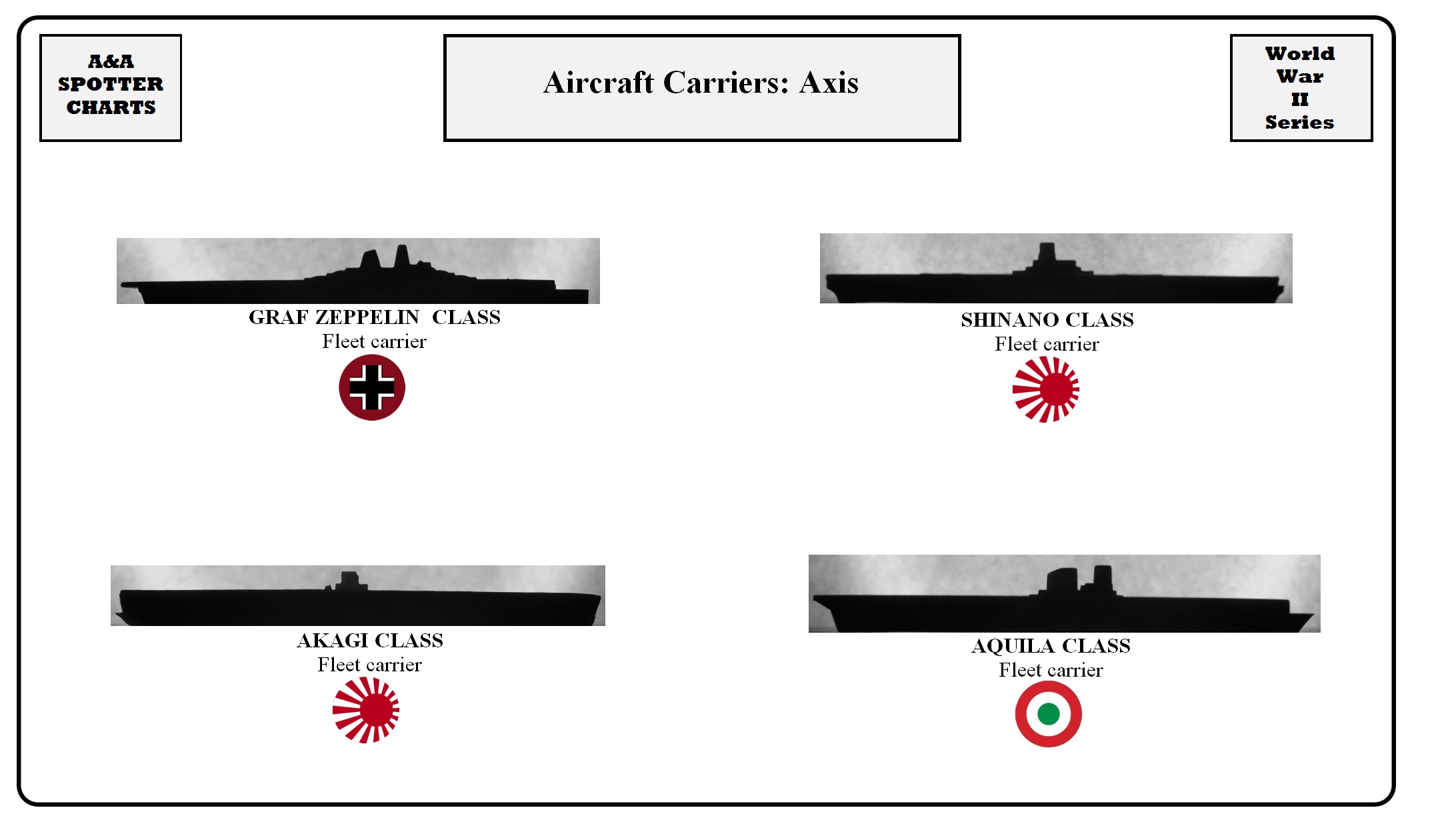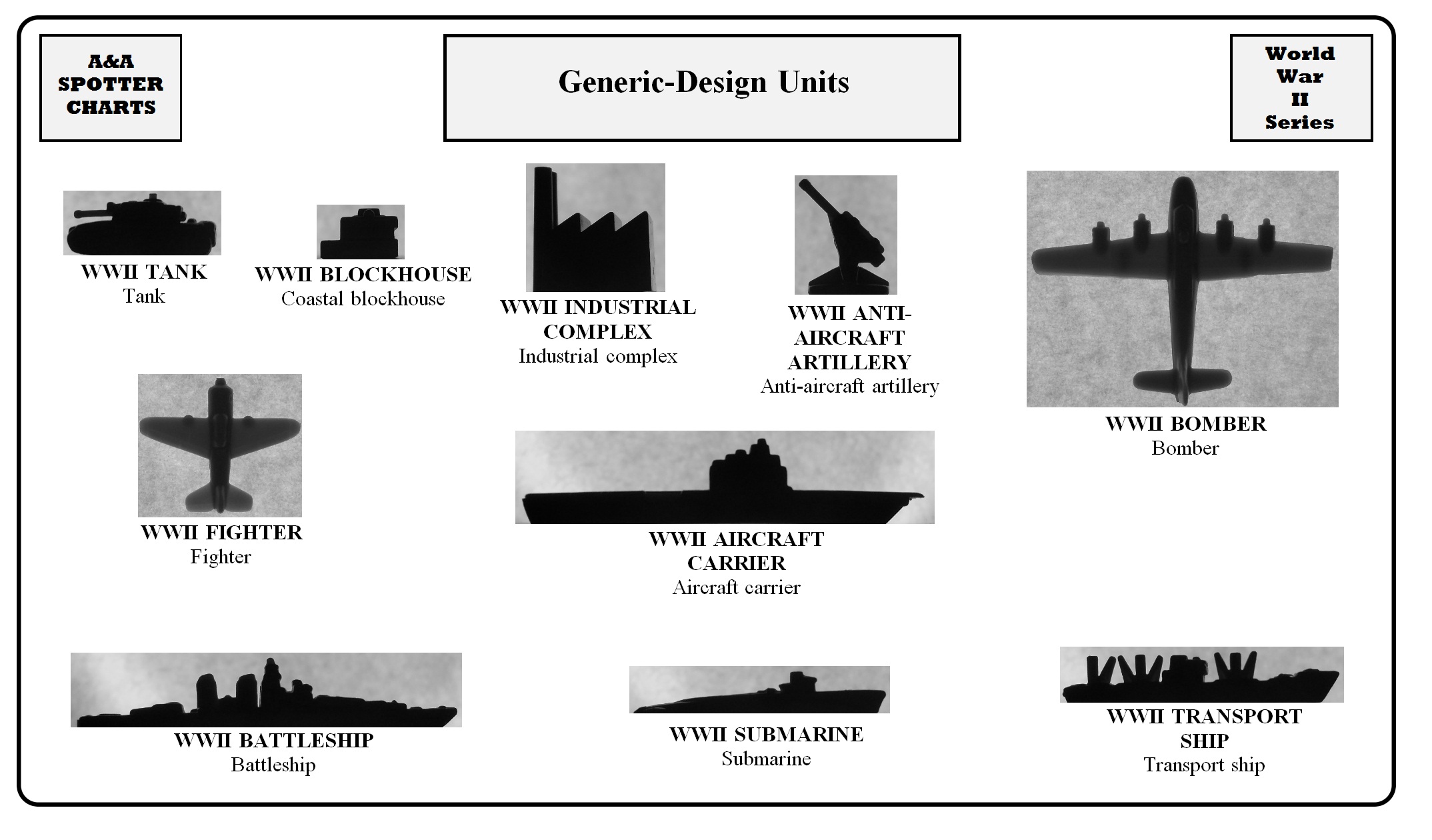@feckingwrecked Think his rules are on here somewhere, although I kinda remember him wanting to sell stuff a while back. Always skeptical of that myself. Wouldn’t have anything if it weren’t for larry
A&A Unit Identification Charts
-
After looking at some WWII aircraft recognition posters this summer, I decided to put together some similar unit identification charts for the Axis & Allies sculpts, using actual photographs of the plastic pieces. I shot the photos in close-up, using a high-contrast lighting arrangement, then converted the pictures to greyscale black-and-white to produce colourless silhouettes. The pictures are shot pretty much from an identical distance, so the sculpts should all be more or less correctly scaled relative to each other (though the aircraft pictures did come out a little larger than the other units because I was shooting them with a different camera setup).
I haven’t tried printing the picture files directly, but as an experiment I copied-and-pasted one of them into a Word document, in landscape page layout, with the four margins reset to 0.5 inches; the page came out fine when I printed it. I used black-and-white printing for this test, but the next thing I’ll do is print out the full set of 23 charts in colour to display the roundel colours.
I’d like to share these charts with my fellow A&A enthusiasts, so I’ll be posting them in this thread, two at a time, over the course of the next couple of days. For the sake of variety I’ll be jumping back and forth between land, air and sea units; the filenames, however, give a more systematic arrangement under those three broad categories.
Please note that the charts only assign one primary country roundel to each sculpt, even when a sculpt is used in multiple plastic colours by multiple countries in various A&A games. The main purpose of the charts is to differentiate between the various unit types and to identify specific models and classes within each type, regardless of which A&A game features them.
The first two charts for today are the WWI and WWII infantry charts.
-
-
-
CWO Marc,
––To paraphrase a well known saying,…"Great A&A minds think alike". (Although I certainly DON’T think of myself as great by any stretch of the imagination.)
––I had the same thoughts as you concerning “Unit Identification” of A&A units. With all of the new OOB and
2nd Edition units plus the new HBG and eventually FMG units that I will have in my A&A set-up,….and my desire that any player be able to quickly and correctly identify all units, including my 89 year-old Dad,…I came up with much the same thought as you have. Although my Unit ID Charts will have color pics from a 3/4 high view, showing not only the shape/size of the unit,…but it’s National Insignia as well. IMHO this will come in handy especially for the “Neutral” and
“New Country’s” units.----In order to differentiate all of the aircraft types from one another,….I organized a “Alpha-Designator” to signify the type of each aircraft which will be applied it to their fuselages with decals (see pic, below, for a “D”, Dive Bomber).
The designators are:
E….Early Fighter
F…Fighter
L…Long-range Fighter
J…Jet Fighter
D…Bomber, Dive
M…Bomber, Medium
H…Bomber, Heavy
R…Recon
T…Transport----Also, for “gameplay” issues I have decided to standardise my 105 Artillery and Sea Transport units to the SAME SCULPTS. These “common” sculpts will be clearly marked with the Flag/Roundel of their owning country. IMHO this is such a small concession and will much simplify a lot of unit confusion possibilities at only the small cost of all nations sharing a much detailed but “common” Artillery piece or Sea Transport. These are the Artillery units that Wil Tan has been modifying/detailing (see below, Blue unit on right). All Heavy Artillery or other Ship units will obviously be country-specific.
––As it will be quite some time before ALL of my detailed and/or painted units will be completed, I will probably will go ahead and make “interim” Unit ID Charts" and update them as new units are completed.----I really like your idea of using a monochromatic profile of all of the units like was done for units in World War 2 and think your talent in doing so is to be commended. They look real “Cool”. :-D
“Tall Paul”
-
-
@Tall:
––I had the same thoughts as you concerning “Unit Identification” of A&A units. With all of the new OOB and 2nd Edition units plus the new HBG and eventually FMG units that I will have in my A&A set-up,….and my desire that any player be able to quickly and correctly identify all units, including my 89 year-old Dad,…I came up with much the same thought as you have. Although my Unit ID Charts will have color pics from a 3/4 high view, showing not only the shape/size of the unit,…but it’s National Insignia as well. IMHO this will come in handy especially for the “Neutral” and
“New Country’s” units. ÂThanks for the feedback Tall Paul and for the information on your own unit identification project. The concept of taking three-quarter photos of the units will indeed be of particular value to new players, since it inherently provides more visual information than plan-view or elevation-view silhouettes. And it’s great that your charts will include HBG pieces too, since that’s already a very large and diverse pool of units and since it continues to grow with the passage of time!
-
-
-
This is a great idea!!
-
This is a great idea!!
Thanks! I like the unit identification charts in the A&A rulebooks, but there are some things about them I find less than optimal, so I created my own unit charts (mainly from the perspective of sculpt organization rather than game play). The pictures in the rulebook unit charts are a bit small and not all rulebooks have them – for instance, the 1914 rulebook has no such chart, it doesn’t have proper unit profile silhouettes for the submarines and transports, and (if I remember correctly) the rulebook even refers to the battleship as a cruiser on one of the maps. The 1940 (2nd ed) rulebook chart uses identical silhouettes for the British and ANZAC cruisers, even though the sculpts are different. Some of the names given in the rulebook charts are problematic: for example, some designations are vague (“Baltic Timber Ship” rather than “Volgoles type”), some use the name of a non-lead ship as the ship class name (“Ray” rather than “Gato”), and some are arguably wrong (“Hilfskreuzer” – which is incorrectly spelled with a “ue” in the rulebook and which refers to an auxiliary cruiser rather than a transport ship – instead of “Dithmarschen type”). There have also been unit name inconsistencies from one rulebook to the next, as in the case of the Yak fighter which some rulebooks identify as a MiG. And of course, for obvious reasons, the rulebook charts for a given game exclude sculpts from other games – for instance, the trucks from BotB aren’t found in the 1940 rulebook charts, which is perfectly understandable. So I tried to address these issues as much as possible in the customized charts I made.
Continuing from where I left off yesterday, the first two charts for today are the Allied and Axis tactical bomber charts.
-
-
It is a great idea and excellent work Marc. I did mean to say, but wanted to look properly on the PC, only I have not had time recently.
Will do at the weekend. -
@wittmann:
It is a great idea and excellent work Marc. I did mean to say, but wanted to look properly on the PC, only I have not had time recently. Will do at the weekend.
Thanks – I enjoyed putting these charts together. I wish I had a 35mmm SLR digital camera that I could have used for this project because it would have given me better control over the high-contrast exposure and the close-up focus. The little camera I have isn’t designed for this kind of photography, so I’m actually surprised that most of the shots came out pretty decently (though some of them took me as many as a dozen tries to make them work).
-
-
-
-
-
That was really cool to check out. It did make me realize how different the two Panthers are. I’m assuming the 2 different Italian tanks come from anniversary and E-40.2?
-
That was really cool to check out. It did make me realize how different the two Panthers are. I’m assuming the 2 different Italian tanks come from anniversary and E-40.2?
Thanks – glad you liked the charts. Yes, the M14/41 is the super-rare one from Anniversary and the M15/42 is the one from Europe 1940 (2nd edition).
The situation with the Panthers is actually even more complicated than what the charts show. When I was going through my sculpt collection to figure out which sculpts I’d use for the photos, I identified (as I recall) about six different variants of the Panther – three for the old model and three for the new model. The differences mainly involve the gun: long or short, thick or thin, with or without a muzzle brake, elevated or level. Some other sculpts (like the Sherman) likewise show small variations of this type, and others show even more dramatic differences – like the Hipper-class cruiser, which comes in transom-stern and cruiser-stern versions. For a while I was tempted to include all these variations in my charts, but it quickly became apparent that this would make the charts too big and too complicated. So I decided to be very selective about including different versions of sculpts that are supposed to represent the same thing. I did it for the German 88 because over the years it switched its game function from field artillery (which was incorrent) to an AAA weapon, with the change being marked by a radical increase in the size of the sculpt. Ditto for the Stuka, which went from the incorrect role of fighter to the correct one of tac bomber (and likewise grew in size). The Panther has always functioned as a tank piece (correctly so), and it didn’t change size very much when the new version came out, but the look is very distinctly different owing to such details as the side-skirts, so I felt that it warranted being divided into two versions.
-
yeah I remember when the original Europe came out. I had alot of questions like why the stuka it’s not a fighter. why the 88mm it’s not artillery and it looks to much like the AA gun. And why the P-38 it looks so much different than other countries fighters I remember it screwing up new players. I’m glad they got most of that straightened out. As far as the Panther goes over the years I’ve learned they always look alittle different and it’s one of the first things I look at when a new game comes out. What did they do to the Panther this time.
Suggested Topics



